Pioneering foreign student makes his mark Down Under
People
In the days of the White Australia policy when international students in Adelaide were few and far between, Henry d’Assumpcao needed a letter from the Minister of Immigration, Arthur Calwell, to gain admission as a boarding student to Sacred Heart College in 1949. Seven decades later, Henry spoke to JENNY BRINKWORTH about how he went from being an ‘alien’ employed by the Weapons Research Establishment to Chief Defence Scientist of Australia.
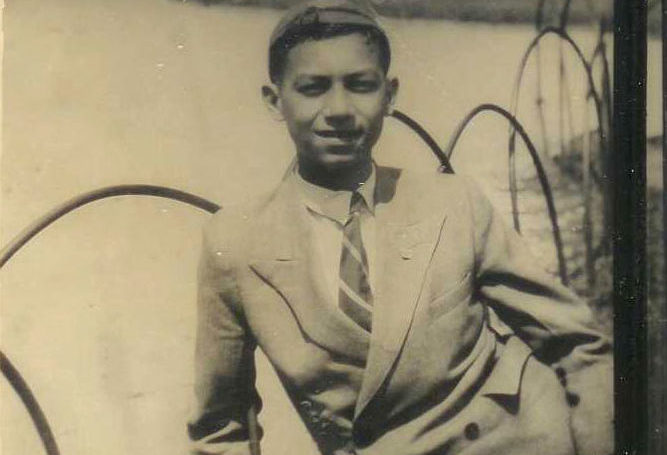
As a young boy in Japanese-occupied Hong Kong, Henry d’Assumpcao saw the best and worst of humanity. He heard of atrocities committed by Japanese soldiers but he also saw acts of kindness towards his own parents.
Henry was born into a Portuguese family in Macau, a Portuguese settlement dating back 450 years to when St Francis Xavier brought Christianity to Asia. When the British took over Hong Kong with its deep harbour they took trade away from Macau and his father sought employment in Hong Kong.
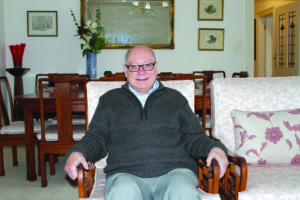
Henry d’Assumpcao in his home at Erindale.
Henry was seven when the Japanese invaded the British colony in 1941. He remembers bombs falling and having to shelter in an underground garage. In the ensuing chaos, his family and 400 other people took refuge in the home of the Portuguese consul, returning home after the Japanese reimposed order.
“The Japanese came to our apartment to take my mother’s sewing machine; she pleaded with them not to, and offered to repair their clothes instead, so they brought their torn and blood-stained clothes to her,” he said.
Advertisement
“They once repaid us with a steaming tray of corned beef, most welcome food.”
Another time the Japanese soldiers came to warn his mother that she was in danger of being raped and urged her to hide.
Although the Portuguese were neutral during the war, some had fought with the British in the defence of Hong Kong and were either killed or sent to prison. But most, like Henry’s family, were allowed to leave Hong Kong and return to Macau which was transformed into a huge refugee camp.
Henry’s father got a job in Macau as a waiter and his mother used to undo woollen jumpers and remake them for sale.
“I would see beggars in the street one day, then the next day they would be gone. Once I was eating a banana walking down the street when a young man ran by, grabbed it out of my hand and desperately stuffed it into his mouth, skin and all. There would have been hundreds of thousands of Chinese starving. Some women sold themselves in prostitution to survive.”
Advertisement
Henry attended a government school for refugees in Macau until the war ended and he returned to Hong Kong where he went to a convent school and then to a Salesian boys college.
With Hong Kong in the middle of a civil war between the Nationalists and the Communists, and a foreign education highly valued, Henry and his brother Carlos were sent to board at Sacred Heart College in Adelaide – Carlos in 1948 and Henry a year later. A dozen friends from Hong Kong joined them later.
Henry still has the letter written by the Minister for Immigration, Arthur Calwell to Ken Bardolph, a South Australian MP, whose son was head prefect at SHC. “The (Marist) Brothers must have asked for Ken’s help,” he explained.
His brother presumably went through a similar process and Henry was later told that, when Carlos arrived, the immigration officials were sent to check if his face looked Asian.
Henry was 14 when he arrived at Sacred Heart and knew nothing about the school or, indeed, Australia. But he said he never felt insecure and his school days were happy ones.
“There was a bit of teasing about the surname but never in a malicious way; I was accepted by people, they made friends with me and invited me to their homes,” he said.
“Holidays were a problem because the school closed down altogether…once the headmaster, Br Sylvester, sent me to stay with his spinster sister in Melbourne: how generous was that?
“They were good Brothers, noble men.”
His first ambition was to be a lawyer but his best friend Bernie Wadsworth had decided to do engineering and Henry wanted to join him at university so after three years at the Somerton Park college, including leaving honours, he made what proved to be a life-defining decision to study electronic engineering at the University of Adelaide while residing at Aquinas College.
Finishing equal top in his final year at university, he hoped to work for the Weapons Research Establishment (WRE) at Salisbury but his official status of ‘alien’ precluded this. Fortunately, a senior research manager there made arrangements for Henry to be paid to do research for WRE at the university, avoiding the need for a security clearance, but without any conditions.
“Only much later, when I became a manager myself, did I realise the enormity of what this man had pulled with the bureaucracy of the day,” he said.
He began working in the area of radar and was sent to one of the top establishments in England for 15 months. On his return he switched to underwater acoustics and, in his own humble words, “made some contributions there”.
“I was very privileged to work with the then Chief Scientist of the Australian Defence Scientific Service in Melbourne, Alan Butement, a great man who had invented radar,” he said.
“I was a junior boffin, just one rung up from the bottom, working with this eminent scientist.”
Together, they came up with the concept of a new sonar buoy system which detects and accurately locates submarines and was highly successful, generating $500m of defence industry work in Australia. “It was a huge advance on anything done before and has only just gone out of service after 30 years,” he said, quickly adding that it was the engineers who turned their idea into “this incredible thing”.
After about 15 years of “deep research” he became involved in research management and climbed the ladder “very slowly”.
While Henry’s career was blossoming, the other members of his family came to Australia, first his younger brothers who also boarded at SHC and then in 1964 his parents and sister.
At the age of 37 he married Colleen Symons, a Cabra old scholar and nurse, and they had two boys and two girls.
The family moved to Canberra for four years in 1987 when Henry was appointed the Chief Defence Scientist of Australia and head of the Defence Science and Technology Organisation with its 4400 staff.
During this period Henry travelled overseas regularly, representing Australia at international gatherings, particularly one which involved the five allies (the United States, Great Britain, Canada, New Zealand and Australia): “We would exchange secret information and discuss joint projects; it was a very powerful group, very constructive.”
In 1992 Henry was appointed an Officer of the Order of Australia (AO) for his services to science and technology.
On his return to Adelaide, Henry started up a national cooperative research centre at UniSA which involved four other universities and industry, and he served part-time on a number of international and ministerially appointed committees. He also consulted to the Australian Customs Service but in 2005 he finally got to his “used by date” and retired.
Raised in a strong Catholic family, he described himself as a “lukewarm” practising Catholic during his busy working years, but retirement gave him time to develop his faith and he became more closely involved in the Tranmere parish. “I’m preparing for my final exams,” he quipped.
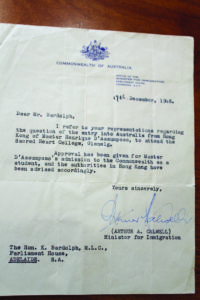 Since the death of his beloved Colleen three years ago, Henry has spent many hours on his “major project” which is to try to preserve the history and culture of Macau.
Since the death of his beloved Colleen three years ago, Henry has spent many hours on his “major project” which is to try to preserve the history and culture of Macau.
With his four children and 17 grandchildren all living in Adelaide, Henry said he is “very happy, very blessed”. As he puts that letter from the Minister for Immigration back in the file, one can’t help but think that Australian society is the one that is blessed.


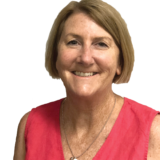
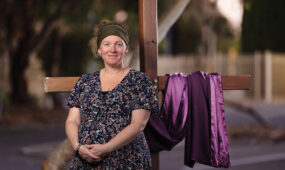
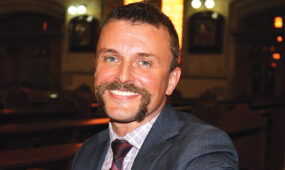
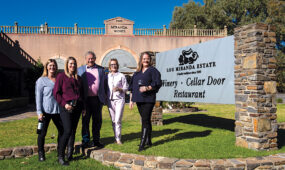
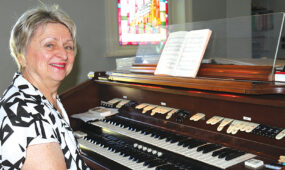

Comments
Show comments Hide comments